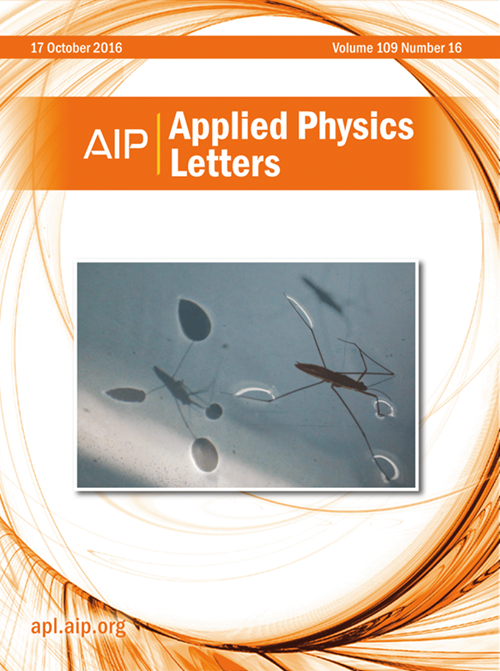100 GHz以上的声学谐振器
IF 3.6
2区 物理与天体物理
Q2 PHYSICS, APPLIED
引用次数: 0
摘要
压电谐振器具有体积小、插入损耗低、质量因数高等优点,是信号处理的常用构件。随着消费电子产品向毫米波频率推进,设计人员必须提高谐振器的工作频率。目前最先进的提高工作频率的方法是减小压电薄膜的厚度,缩短声波波长或使用高阶模态。不幸的是,保持高质量的因素通常需要更厚的压电层。单层越薄,缺陷密度越高,表面相关阻尼造成的相对损失也越大,从而降低了机电耦合和质量因子。声学高阶模态也能提高工作频率,但随着模态数的增加,机电耦合迅速减小。在这里,我们克服了这些限制,利用三层铌酸锂晶体取向交替的压电堆叠来优先支持高阶模式,从而在不降低质量因子的情况下增强机电耦合。我们的方法提高了毫米波声学谐振器的优点,与60 GHz以上的最先进的压电谐振器相比,大约提高了一个数量级。这种交替晶体取向的概念有助于开发具有高品质、低插入损耗和小尺寸的毫米波谐振器,从而实现毫米波信号处理和计算中的应用。本文章由计算机程序翻译,如有差异,请以英文原文为准。
Acoustic resonators above 100 GHz
Piezoelectric resonators are a common building block for signal processing because of their miniature size, low insertion loss, and high quality factor. As consumer electronics push to millimeter wave frequencies, designers must increase the operating frequency of the resonator. The current state-of-the-art approach to increase the operating frequency is to decrease the thickness of the piezoelectric film to shorten the acoustic wavelength or to use higher order modes. Unfortunately, maintaining high quality factors typically requires thicker piezoelectric layers. Thinner individual layers suffer from higher defect densities and increased relative losses from surface related damping, which degrade the electromechanical coupling and quality factor. While acoustic high order modes can also increase operating frequency, the electromechanical coupling rapidly decreases with increasing mode number. Here, we overcome these limitations by utilizing a piezoelectric stack of three layers of lithium niobate with alternating crystallographic orientations to preferentially support higher order modes and thereby enhance the electromechanical coupling without degrading the quality factor. Our approach improves the figure of merit of millimeter wave acoustic resonators by roughly an order of magnitude greater compared to state-of-the-art piezoelectric resonators above 60 GHz. This concept of alternating crystallographic orientations facilitates a path to develop millimeter wave resonators with high figures of merit, low insertion loss, and miniature footprints, enabling applications in millimeter wave signal processing and computing.
求助全文
通过发布文献求助,成功后即可免费获取论文全文。
去求助
来源期刊

Applied Physics Letters
物理-物理:应用
CiteScore
6.40
自引率
10.00%
发文量
1821
审稿时长
1.6 months
期刊介绍:
Applied Physics Letters (APL) features concise, up-to-date reports on significant new findings in applied physics. Emphasizing rapid dissemination of key data and new physical insights, APL offers prompt publication of new experimental and theoretical papers reporting applications of physics phenomena to all branches of science, engineering, and modern technology.
In addition to regular articles, the journal also publishes invited Fast Track, Perspectives, and in-depth Editorials which report on cutting-edge areas in applied physics.
APL Perspectives are forward-looking invited letters which highlight recent developments or discoveries. Emphasis is placed on very recent developments, potentially disruptive technologies, open questions and possible solutions. They also include a mini-roadmap detailing where the community should direct efforts in order for the phenomena to be viable for application and the challenges associated with meeting that performance threshold. Perspectives are characterized by personal viewpoints and opinions of recognized experts in the field.
Fast Track articles are invited original research articles that report results that are particularly novel and important or provide a significant advancement in an emerging field. Because of the urgency and scientific importance of the work, the peer review process is accelerated. If, during the review process, it becomes apparent that the paper does not meet the Fast Track criterion, it is returned to a normal track.
 求助内容:
求助内容: 应助结果提醒方式:
应助结果提醒方式:


